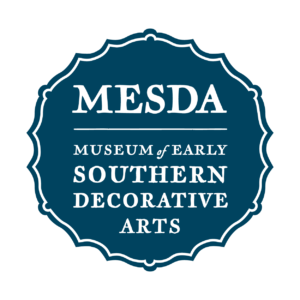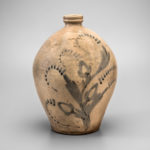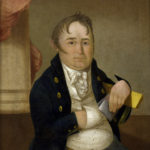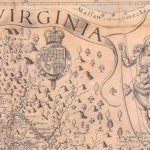Guest Editor’s Introduction: New Discoveries: The Ever-Expanding South
A. Nicholas Powers

The American South is a dynamic, ever-expanding place. Each year, museum curators and scholars discover previously unknown objects and uncover stories that change (or in some cases reinforce) our perspectives on the lives of early Southerners and their cultural traditions. Long known for publishing groundbreaking research on the decorative, fine, folk and self-taught art, and material culture of the early South, MESDA is now providing a new platform for both emerging and established scholars. The “New Discoveries” feature of the MESDA Journal now provides museum professionals the opportunity to share short-form research notes highlighting significant new acquisitions and discoveries within their collections. Through the New Discoveries feature, the latest discoveries in southern culture will become available at the click of a button or the swipe of a screen. Lea Lane’s accompanying article exploring the significance of a rare stoneware jug by French-émigré potter Augustin Marchal is the perfect introduction for … Continued
New Discoveries: Alabama Pottery with a French Accent: MESDA’s Recently Acquired Jug by Augustin Marchal
Lea C. Lane

In 2022, MESDA expanded its collecting and research focus to include Alabama as our eighth state. We celebrated this long-contemplated move with the exhibition Thrown Together: Pots and People of Early Alabama in 2023. Before the exhibition opened, we were alerted to a remarkable jug coming to auction at Crocker Farm, Inc. [1] It became MESDA’s first acquisition of an Alabama object and immediately went on view alongside other ceramic treasures from the state (Figure 1 and 2).[2] The jug acquired by MESDA is attributed to the shop of Augustin Marchal (b. 1810).[3] Soft blue leaves curl up the sides of the vessel, culminating in dotted arcs that echo the overall shape of the object. It may perhaps be a representation of a cotton plant; the tulip-like shapes resemble the bolls that eventually mature into billowy puffs of fibers, and the dashed arches could arguably represent that later stage of … Continued
Lewis Clephan: Painter and Portrait Artist of Washington, DC
Carolyn J. Weekley

The United States’ new capital city was an odd choice for a portrait painter at the end of the eighteenth century. While Boston and New York were centers of artistic training and activity, when Washington was founded in 1790 it was sometimes referred to as the “Mud Hole” and the “Wilderness City.”[1] Washington resident Marcia Burnes Van Ness went so far as to note that the city had “trails for streets that ran between surveyor’s stakes in the tobacco fields.”[2] Adding further color to early accounts of the city, in 1834, William Dunlap, an artist and chronicler of the arts and theater, republished exaggerated remarks by one writer who had described Washington at the end of the eighteenth century as “morass and forest, the abode of reptiles, wild beasts, and savages.”[3] A developing city bustling with building activity, Washington may not have been an artist’s dream locale, but it was … Continued
Research Note: Icons of American Memory? John Smith’s Maps of Virginia and New England
Cassandra Britt Farrell

John Smith’s maps of Virginia and New England have stood out as important pieces of colonial American history, particularly as they relate to their distinctive regions (Figure 1 and Figure 2). The maps were first published in 1612 and 1616, respectively. To European cultures, the representations of Powhatan’s village and Virginia’s Algonquin population on Smith’s map of Virginia became symbolic of America’s original inhabitants. Many mapmakers, map-sellers, and booksellers of the seventeenth century and thereafter liberally reproduced images found on the map. Smith’s map of Virginia’s Tidewater region was considered the seminal representation of the colony until John Senex published his map of Virginia in the late seventeenth century (Figure 3). Smith’s chart of New England’s coastline is likewise one of the foundational charts of that region’s cartography.[1] Smith’s map is the first time that “New England” was published in reference to lands north of Virginia. The map was used to promote … Continued
© 2024 Museum of Early Southern Decorative Arts
